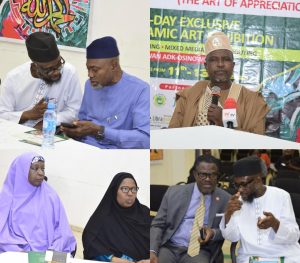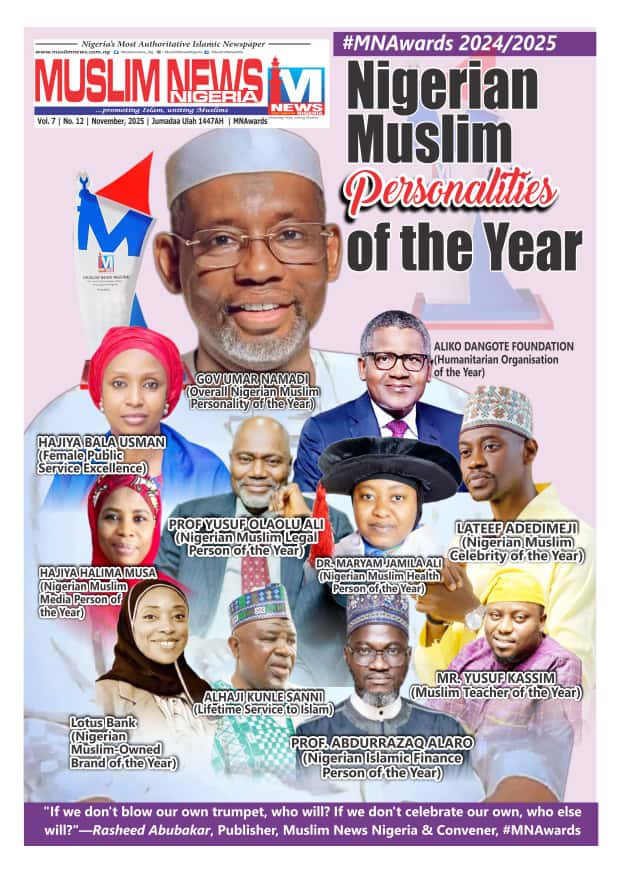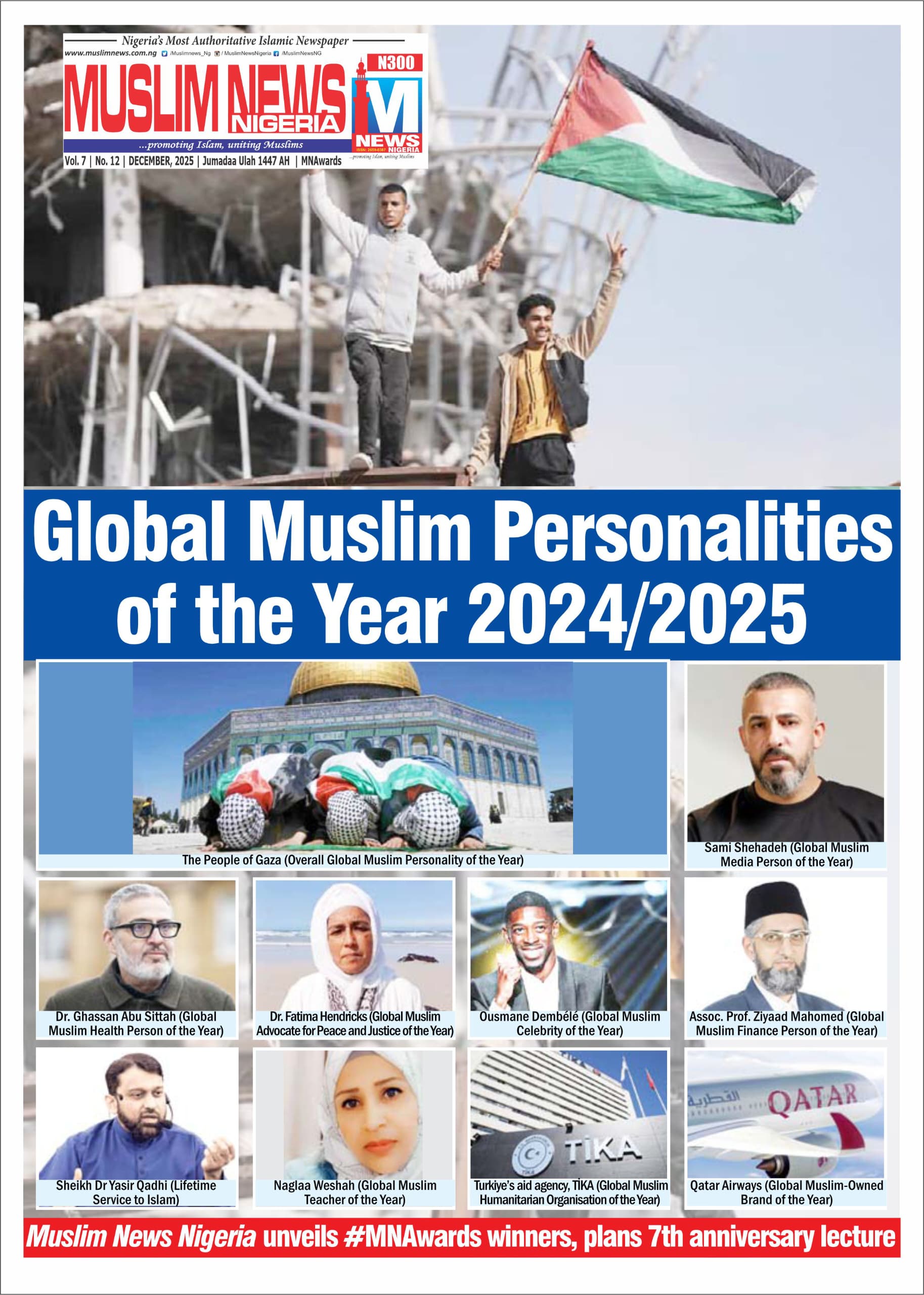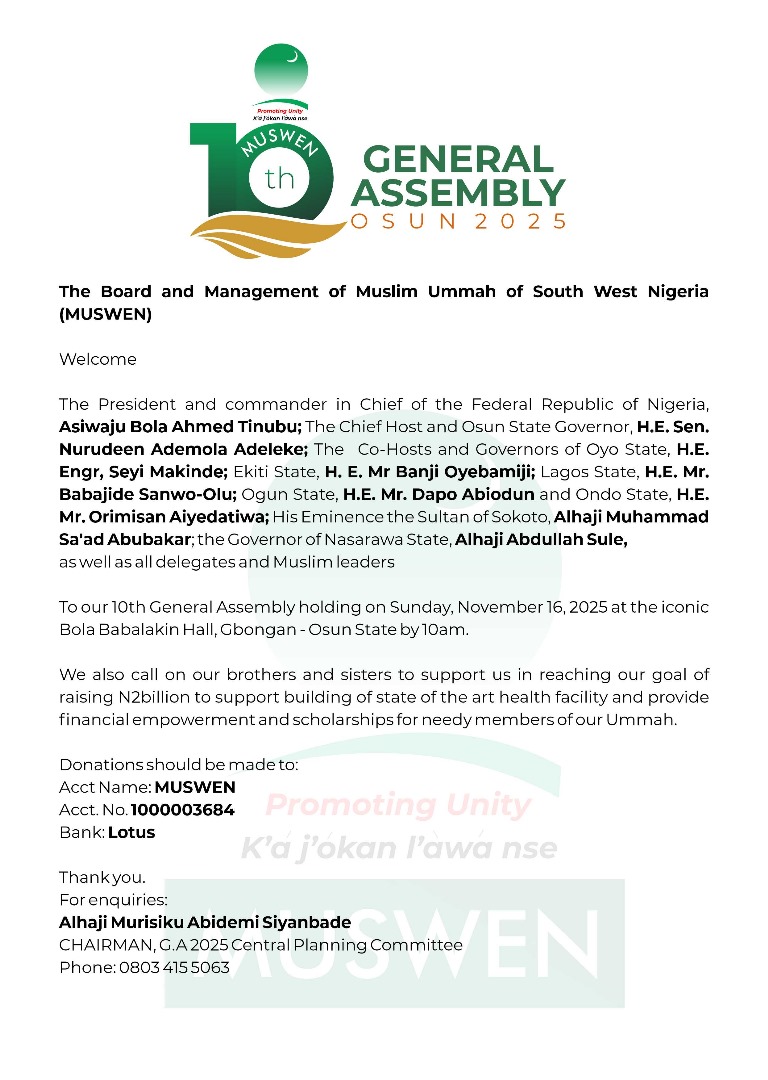The second episode of Halal Art Exhibition organised by the Halal Art Gallery has come to an amazing end in Abuja leaving behind an impactful message on the economic potential of Islamic art and its role in fostering cultural appreciation and financial empowerment.
The three-day Halal Art Exhibition, tagged “Alhamdulillahi Goma-Goma” (The Art of Appreciation II) was held at the Art Pavilion, opposite Radio House, beside ICC, Federal Capital Territory, FCT, Abuja.
Hosted by renowned artist Alhaji Ridwan ADK-Osinowo, the event attracted a distinguished audience, including policymakers, academics, and religious leaders, all of whom underscored the importance of leveraging Islamic calligraphy and artistic expressions for national economic growth.
Speaking at the exhibition, Senator Shuaib Afolabi Salisu, representing Ogun Central senatorial district of Ogun in the Upper Chamber of the National Assembly, highlighted the depth of spiritual and societal messages conveyed through the artwork.
He said, “These pieces are not just artistic expressions; they embody essential truths, spirituality, and hope for a better future. Despite our national challenges, exhibitions like this remind us of the resilience and potential within us,” he stated.
The chairman of the event, Professor Yusuf Olaolu Ali, SAN, emphasized the historical significance of Islamic art, describing it as a testament to Islam’s contribution to human civilization.

“This exhibition serves as a reminder of the rich artistic heritage within Islamic culture. More than just visual appeal, these works inspire reflection and can serve as a means of cultural and economic enrichment,” he noted.
Similarly, Dr. Musa Olaofe, Chief Imam of Ansar-ud-Deen Mosque, Abuja, called for greater recognition of Islamic art’s economic benefits. He cited countries like Saudi Arabia and Egypt, where Islamic calligraphy and traditional artistry thrive as income-generating industries, adding, “We too can build on this legacy, transforming our artistic traditions into avenues for economic productivity.”
At the heart of the exhibition was Alhaji Ridwan ADK-Osinowo’s vision of gratitude, expressed through a curated selection of paintings, mixed media, and intricate woodwork.
His works, rich in Arabic calligraphy and spiritual symbolism, reflected a deep connection to Islamic teachings, reinforcing the theme of appreciation for Allah’s countless blessings.
The exhibition also attracted notable government figures, reinforcing its importance in the national cultural landscape. Among the dignitaries present were: Hajiya Aisha Lawal Saji, Commissioner for Tourism and Culture, Kano State. Hajiya Bahijjah Usman, Director of Special Duties, Ministry of Tourism and Culture, Kano State.

A representative of Hajiya Hanatu Musa Musawa, Honourable Minister of Arts, Culture, and Creative Economy. Hajiya Lami Chinade, from the Directorate of State Liaison, Office of the National Security Adviser (ONSA). A Representative of Dr. Mahmoud Mariya, Honourable Minister of State FCT, Dr Habibah Muda Lawal OON the Grand Matron of PEACE Magazine, and Hajiya Rabi Namtari, Director Great Heights School Kado.
The pieces on display, crafted using fibreglass, aluminium, acrylic, and wood, exemplified Osinowo’s pioneering approach to Islamic calligraphy, blending traditional Arabic scripts with contemporary artistic techniques. This innovative fusion reaffirmed his reputation as a leading figure in Islamic art, pushing boundaries while preserving the essence of Islamic aesthetics.
Beyond its artistic brilliance, the exhibition sparked meaningful conversations on the intersection of art, faith, and economic sustainability. It demonstrated that Islamic art, when harnessed effectively, can be more than just a medium of expression, it can be a source of inspiration, cultural preservation, and financial opportunity.

As the curtains close on Alhamdulillahi Goma-Goma, the discussions it ignited remain relevant, how can Nigeria tap into its rich Islamic artistic heritage to drive cultural and economic advancement? The answers, as seen through the brushstrokes and carvings of this exhibition, may lie in the timeless beauty of gratitude.







